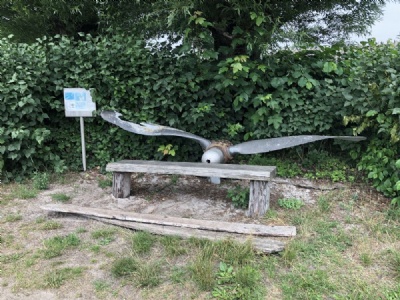Örnahusen
On the morning of May 24, 1944, a B-17 bomber took off from its base in England. The Bomber was one of around 600 planes heading for Berlin to bomb industries. After mission was completed and on the way back to England, it was hit by german flak and a fire broke out on board. Pilot Lieutenant William F. Nee then gave orders to the crew to leave the plane, but this order was not perceived by all crew members. The six crew members who failed to comply with the order managed to extinguish the fire and take over the levers of the plane even though none of them was a trained pilot. They set course for Sweden and around lunchtime they reached the Swedish coast east of Ystad. There they circulated for a while and outside the sea at Simrishamn three of the remaining crew members jumped. Two were rescued and one drowned.
The plane then turned south again and two more crew members jumped out of the plane. One survived but one drowned when the hard wind brought him out to the sea. Remaining crew member, Fredric T. Neel, tried to make an emergency landing on the water outside Örnahusen. However, the plane hit the water so hard that it was ripped apart and sank a few hundred meters off the shore. Neel died in the crash and his body floated ashore and was found on July 8. Of the three who survived the intermezzo over Sweden, they were interned by the Swedish military before being returned to their home countries. Those who had already jumped over Germany were captured and put into German prisoner-of-war camps.
Current status: Monument (2021).
Location: 55°26' 55.29" N 14°15' 40.73" E
Get there: Car.
Follow up in books: Gilmour, John: Sweden, the Swastika and Stalin - The Swedish Experience in the Second World War (2011).

At the shore, there is a simple information board and one of the plane’s propellers salvaged from the impact site. At the Skillinge maritime museum about three kilometers north of the site, one of the crewmen’s parachute is said to be preserved and exhibited.